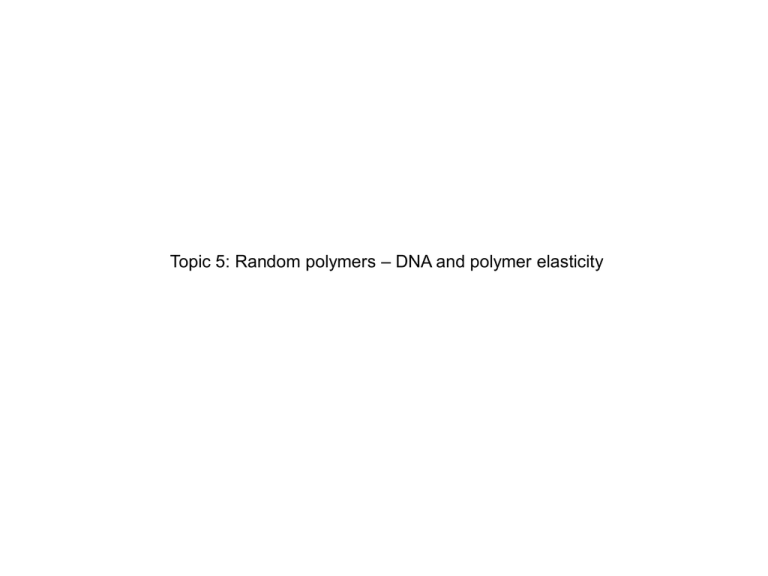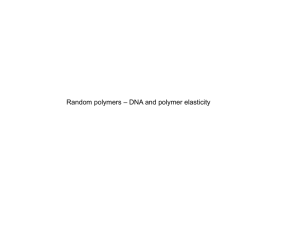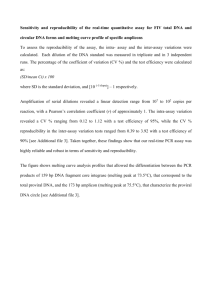– DNA and polymer elasticity Topic 5: Random polymers
advertisement

Topic 5: Random polymers – DNA and polymer elasticity Overview: We’ll see that a long polymer can be viewed as a random walk Long DNA polymers like our chromosomes do random walks Random polymers have elasticity – entropic elasticity Applications: DNA breathing, stretching random polymers Freely jointed chain Imagine a chain made up of links of size, a Each link can be oriented randomly Links do not interact – i.e. there is no self-avoidance all conformations have E = 0 Real biopolymers as freely jointed chains To discretize a real polymer into links, we consider ‘a’ to be the length over which the polymer is effectively rigid We’ll see that this can be defined exactly in terms of a measurable quantity called persistence length 1D random walks Each segment has equal probability of going left or right Shown are possible ways of winding up with a certain number of steps to the right, nr On average what is the end-to-end distance? let’s calculate this … End-to-end distance So for a random walk, on average the spread of the polymer goes as 𝑁 Probability of configurations: Probability of configurations: Binomial distribution Proof that mean = N p Binomial distribution becoming Gaussian For small N, the binomial distribution is asymmetric For large N, binomial Gaussian End-to-end probability distribution Note: the most likely end-to-end distance, R = 0 If you pull on the polymer, it will want to restore R 0 purely entropic force <R> = 0 Persistence length Persistence length and link size Sizes of genomes: Radius of gyration log-log plot slope = ½ so chromosomes are like random poly when they are free in solution Compare with E.coli size ~ 2 mm # of bp Applications: DNA melting and PCR: When DNA is in solution it is continually opening and closing, and at high enough temperatures it will completely open, i.e. melt DNA melting is exploited in doing PCR – cycle of opening and closing DNA by changing the temperature Q: At a given temperature, what is the typical bubble size in basepairs? DNA melting and PCR: 1D random walk closed loop of a 1D random walk DNA melting and PCR: Free energy cost DNA melting and PCR: Entropy of loop DNA melting and PCR: Free energy minimization DNA melting and PCR: equilibrium bubble size Low temperature High temperature PCR works by cycling temperature over this melting transition Stretching a freely-jointed chain Atomic Force Microscope (AFM) If we apply a force to a random polymer to stretch it, what will it’s force vs extension characteristic look like? Will it be like Hook’s law? Using an optical trap (or AFM) we can pull on DNA, proteins, RNA to measure how they stretch These experiments will allow us to determine the persistence length of these polymers directly at the single molecule level Pulling on a multidomain protein Our 1D random poly model 𝐿 𝐿𝑡𝑜𝑡 = 𝑁 𝑎 Free energy of stretched freely jointed chain Free energy of stretched freely jointed chain: equilibrium length For a given applied force, what will the equilibrium stretch be? Comparison to data: Hook’s law limit at low forces: Hookian spring Summary: • Long (unfolded) polymers can often be treated as a random walk • Size of random polymer goes as ~ 𝑁 • Most configurations have R = 0 • leads to an entropic force that resists stretching • DNA melting is a balance between entropy and binding energy • The stretching of a random polymer is like a spring at low forces • can determine the persistence length of the polymer • stretching data is not well fit at larger forces




